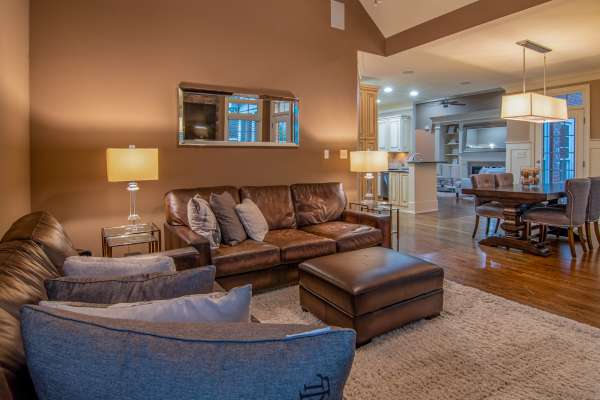A desk lamp is greater than a supply of light; it’s a declaration piece that could raise the ambiance of a room. The lampshade, often not noted, plays a pivotal role in accomplishing this stability. Knowing the way to degree a Measure A Lampshade For A Table Lamp is an critical skill for anybody seeking to harmonize capability with aesthetics. Whether you’re replacing a damaged shade or choosing one for a brand new lamp, knowledge the process ensures you are making the best preference.
1. Understanding the Importance of the Right Lampshade Size

The size of a lampshade directly impacts the arrival and functionality of your lamp. A shade that’s too small can also appearance awkward and fail to diffuse light efficaciously, at the same time as an oversized color can overpower the lamp and make the setup seem unbalanced. Beyond proportions, the proper length guarantees the lamp complements the encompassing décor, creating a cohesive and welcoming space.
2. Tools You’ll Need to Measure a Lampshade

Accurate measurements require the right tools. Equip yourself with a flexible measuring tape, a ruler for instantly strains, and a pocket book to write down dimensions. For more precise measurements, in particular for precise lampshades, a laser measuring tool can be useful. Optional objects like a template or a reference guide can similarly simplify the procedure.
3. Breaking Down the Parts of a Lampshade

Before measuring, familiarize yourself with the anatomy of a lampshade. Key parts include the top diameter (the narrow opening at the top), the bottom diameter (the wider base), the vertical height (measured from top to bottom), and the slant height (the angled side). Understanding these components allows you to approach each measurement with confidence.
4. How to Measure the Top Diameter of a Lampshade
To measure the top diameter, location the measuring tape throughout the narrowest commencing at the pinnacle of the colour. Ensure the tape is taut for accuracy. If the color has an irregular shape, measure throughout more than one factors and calculate the average. This measurement is essential for making sure the colour sits securely at the lamp.
5. Measuring the Bottom Diameter of a Lampshade

The bottom diameter is often the most visible aspect of a lampshade. To measure it, stretch the tape across the widest part of the base. If the shade has a scalloped or unusual design, take multiple measurements and note the largest dimension. This ensures the shade provides adequate coverage for the lamp’s base.
6. Determining the Height of Your Lampshade
Lampshade height can be measured in two ways: the vertical height, taken straight down from top to bottom, and the slant height, which follows the angled side. Use a ruler for vertical height and a flexible tape for the slant. The height should complement the lamp’s base, maintaining a proportionate look.
7. Choosing the Right Lampshade Shape

Lampshades come in numerous shapes, from drum and empire to bell and square. Each shape influences the dimension and normal appearance. For example, drum shades have equal pinnacle and bottom diameters, even as empire sun shades taper extensively. Consider the lamp’s design and the room’s topic when choosing the shape.
8. Matching the Lampshade to Your Table Lamp
Achieving the perfect match involves balancing dimensions, style, and purpose. A general rule is that the shade’s height should be roughly two-thirds of the lamp base’s height. Additionally, the shade’s width should be broader than the widest part of the base for visual harmony.
9. Adjusting Measurements for Unique Lamp Styles

Some lamps defy standard proportions. Measure A Lampshade For A Table Lamp For tall lamps, consider a shade with greater height to elongate the silhouette. Similarly, oversized bases may require a wider shade for balance. When dealing with ornate or unconventional bases, prioritize shades that enhance rather than overshadow the lamp’s unique features.
10. Additional Tips for a Flawless Fit
- Ensure the harp (the metal frame that supports the shade) is compatible with the shade’s fitter.
- Avoid shades that expose the bulb, as this can lead to harsh lighting.
- Test the shade on the lamp before finalizing your purchase to check for visual and functional compatibility.
11. Using Your Measurements to Shop for a New Lampshade

Shopping with accurate measurements saves time and ensures the best fit. When browsing online, compare your dimensions to the product descriptions. In-store, bring your lamp base or a template of its dimensions for reference. Pay attention to fitter styles, such as spider, clip-on, or uno.
12. Troubleshooting Common Issues with Lampshade Fit
If your new shade wobbles or doesn’t sit correctly, the fitter may be incompatible. Adjusting the harp or replacing it with a compatible size can resolve this. For shades that look disproportionate, revisit your measurements and experiment with different shapes or styles to find the ideal match.
13. Caring for Your Lampshade After Installation

Proper care prolongs the life of your lampshade. Dust it regularly with a soft cloth or a vacuum attachment. For fabric shades, spot-clean stains using a gentle detergent. Keep the shade away from direct sunlight to prevent fading and maintain its pristine appearance.
Conclusion
Selecting the right lampshade can Rewire a table lamp from a functional accessory right into a hanging design detail. By gaining knowledge of the artwork of measuring and information the nuances of lampshade proportions, you empower yourself to create a balanced and stylish lighting fixtures answer. With these insights, your Measure A Lampshade For A Table Lamp will now not handiest mild up your space but additionally elevate its fashion.

